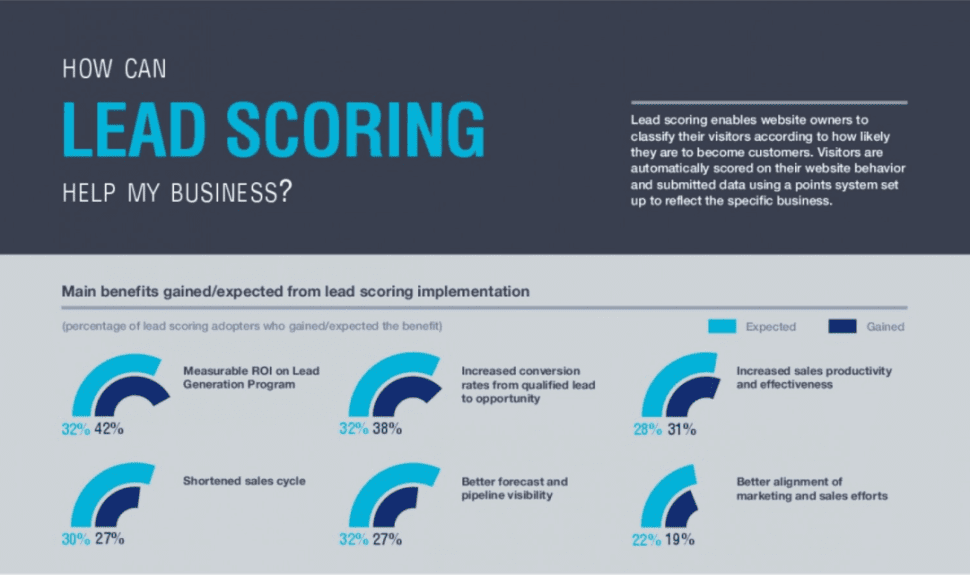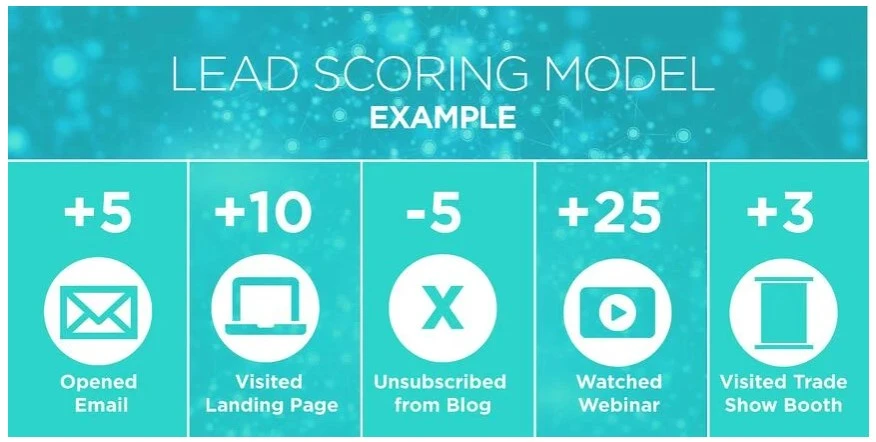Lead Scoring: The Pump of Your Sales Pipeline
Not all leads are created equal!
Lead scoring allows sales and marketing professionals to qualify a lead and determine what stage of the buyer’s journey they are in. It enables sales managers to work with their teams to improve sales pipeline management and predictions to increase sales opportunities.
If you are looking for ways to implement a lead scoring system for your business, take a moment to understand what a lead scoring system is and how it can benefit your sales teams.
Key Takeaways:
- This lead ranking system facilitates classifying and categorizing sales leads with numerical values to allow sales professionals to identify promising leads.
- Before scoring leads, your team must clearly understand the characteristics – known as buyer personas – making a prospect an ideal fit for your products and services.
- Determine what data points to score, such as demographics, behavioral data, levels of engagement, etc. Then designate a point value for each action or trait.
- Assign sales-readiness score values to each prospect based on a single score determined by overall value markers.
- Automation ensures data accuracy by eliminating error-prone manual data-entry processes and information collection.
What Is Lead Scoring?
This lead ranking system streamlines classifying and categorizing sales leads with numerical values, allowing sales and marketing teams to identify promising pipeline leads quickly. Identifying which potential customers are ready to talk effectively translates to increased sales.
Lead scoring isn’t simply a marketing strategy for lead generation. It ensures the effectiveness of sales teams and the organization’s stake in the market. When properly implemented, lead scoring will have the following influence on your business:
- More effective marketing campaigns
- Aligns sales and marketing teams
- Increases sales and revenue opportunities
How to Implement a Lead Scoring System
Lead scoring looks different in every organization. There isn’t a one-size-fits strategy. However, the benefits are universal. They include:
- Fewer lost sales opportunities
- Increase in conversion rates
- Improved productivity
- Higher ROI
- Enhanced sales and marketing team support

Your company needs a unique scoring system to meet its objectives, goals, sales targets, and industry needs. However, even with the individual nature of your company’s scoring system, you can use the below strategies for designing your lead scoring model.
Create Buyer Personas
Before your team can score their leads, they must have an exact understanding of the prospect’s characteristics that make them an excellent fit as a customer. Buyer personas – a semi-fictional representation of an ideal customer – is how sales professionals define these traits for ranking.
A buyer persona profile contains criteria obtained from quantitative research, existing customer data, and anecdotal observations. The more buyer personas defined in your lead ranking system, the more holistic and accurate you and your team’s understanding of your customers will be.
Determine Data Points to Score
Once you have determined buyer personas, it’s time to assign point values to specific attributes. You can break lead scoring into demographical information and behavioral data.
Demographical data include age, location, gender, job title, company size, department, industry, and seniority. Behavior criteria are a bit more complex. They include:
- Qualities and types of emails opened
- Email and newsletter subscriptions
- Social media profiles and engagement
- Website visits
- Content downloads
- Form submissions
- Webinar registration
- Free trial requests
Every industry and organization within that sector will have its description of a sales-ready lead. Therefore, you and your team managers must determine what criteria to score.
Designate Point Values
Now that you and your team managers have determined what data points should have scores associated with them, it’s essential to designate point values for each of the defined traits and actions.
Again, there is no specific score you must give to each criterion. You and your team must determine this based on previous data sets.
For instance, if data shows that customers who open more than 50% of your emails are likely to buy again within 30 days from a prior purchase, you will give that field a corresponding value that enables accurate sales predictions.
Here are a few tips on gathering the data you need to create an efficient lead scoring model:
- Talk to your sales team: Sales professionals speak to your company’s customers every day. These team members can offer vital insights into what factors qualifies a customer as a good fit. Marketing can use these insights to develop more successful campaigns.
- Talk to customers: Customers are more familiar with their buying journey than the reps that help manage their accounts. Reach out to top buyers for feedback regarding the steps that led to their buying decisions.
- Examine your marketing analytics: Insights into previous marketing campaigns can help with lead scoring. It allows you to assign high point values to leads engaged with specific content with high conversion rates.
Determine Sales-Readiness Score Values
Once you have given each data point a score, your lead ranking system will total the points a single lead amasses, giving that prospect its final lead score. In the process, you will also have to determine what score range represents a sales-ready lead. This process will require testing, analysis, and some trial and error.

Experts recommend using a lead scoring system with no minimum values. Require sales staff to follow up with leads equally, regardless of the prospect’s lead score, during a predetermined testing period to collect accurate data.
Once the system determines the number, sales and marketing teams will work together to create an effective outreach campaign based on score values. Have your teams continue to follow up with all leads until they are ready to buy, regardless of the score, but only for a designated period based on lead score values.
Achieve Lead Scoring Success with Automation Tools
Companies that use lead ranking systems experience a 77% increase in lead generation ROI. However, legacy systems and manual processes are not efficient enough for accurate lead scoring.
Sales and marketing automation tools will ensure that your sales professionals stop wasting time on unqualified leads. At Televerde, our revenue growth solutions offer audience insights and engagement analysis to ensure accurate lead scoring. Achieve lead scoring success. Contact us today to learn more about our sales and marketing automation tools.


